Infectious diseases of the GI tract in dogs and cats (Proceedings)
Overview of Protozoans, Giardia, Coccidia, Cryptosporidia, Toxoplasmosis, and more.
Protozoans
• Giardia
• Coccidia
• Cryptosporidia
• Toxoplasma
• Trichomonia
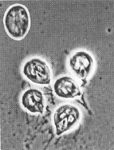
Giardia lamblia
• protozoal infection
• watery, mucoid diarrhea
• may be asymptomatic
• affects young more than older
• small bowel or large bowel
• chronic diarrhea
• pet store, puppy mill, kennel or cattery situation
• Zoonosis!
Giardia
• Diagnosis:
o fresh fecal direct smears
o zinc sulfate fecal flotation
o fecal ELISA test
o duodenal aspirates
o trophozoites, cysts
• Treatment
o fenbendazole (Panacur)
o metronidazole (Flagyl)
o new vaccine GiardiaVax
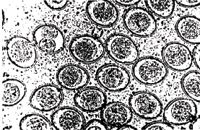
Coccidia
• Cystoisospora spp.
• young kittens and puppies
• diarrhea with mucous and blood streaks
• weakness, dehydration, cachexia
• Diagnosis:
o oocysts on direct smear or
o fecal flotation
• Treatment:
o Albon, trimethoprim/sulfa, Marquis paste (ponazuril, Bayer ®)
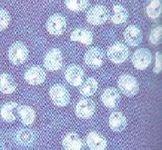
Cryptosporidia
• Cryptosporidium parvum
• young dogs < 6 months
• cats – any age
• diarrhea, may be asymptomatic in cats
• Zoonosis
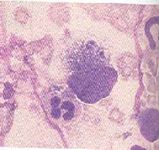
Toxoplasmosis
• Cat is definitive host
• Zoonotic
• many intermediate hosts (humans)
• shed infective oocytes
• transplacental transmission
Trichomoniasis
• Tritrichomonas foetus/suis
• Cats
• Large bowel diarrhea ± blood/mucus
• Diagnosis: direct fecal with saline, resembles Giardia, PCR(?)

Prototheca
• Rare cause of GI disease in the dog
• Hemorrhagic diarrhea
• Systemic signs – respiratory, etc.
• Diagnosis is by biopsy of tissue
• Treatment is not usually effective
• Prognosis is poor
Bacterial
• Enteropathogenic bacteria that are invasive to the intestinal mucosa or produce an endotoxic substance
• Salmonella, Campylobacter, Clostridium, E.coli
Salmonellosis
• gram-negative motile rods
• asymptomatic carriers common
• can cause significant disease
• young, stressed or immunosuppressed animals
• dogs and cats
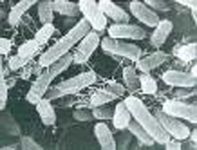
Salmonella spp.
Gastroenteritis:
• acute onset of watery diarrhea, possibly hemorrhagic
Endotoxemia/septicemia
• pyrexia, anorexia, dehydration, neutropenia
• bacterial translocation from gut
Cats – milder signs: pyrexia, leukocytosis, conjunctivitis "songbird fever"
Salmonellosis
• Fecal-oral transmission, contaminated food source; ZOONOTIC!
• Diagnosis
o fecal culture (special media),
o blood culture (septicemia)
• Treatment
o IV fluids, NPO, supportive care, antibiotics controversial due to creation of a carrier state (enrofloxacin, TMS, chloramphenicol)
• Prognosis:
o usually good, septicemia guarded Campylobacter jejuni/ upsaliensis
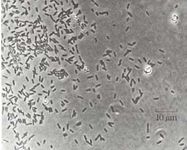
Campylobacter jejuni/ upsaliensis
• gram negative curved rods
• young animal, recently kenneled, immunosuppressed
• dogs and cats
• usually asymptomatic in healthy animals
• acute onset of mild mucoid diarrhea, rarely hemorrhagic
• vomiting, pyrexia, tenesmus and anorexia
• concurrent infections: giardia, salm., parvo, etc. causes more severe disease
Campylobacter spp.
• Zoonotic potential
• Diagnosis:
o fecal cytology – slender seagull-shaped bacteria,
o culture- fragile, hard to grow
• Treatment:
o *erythromycin, *enrofloxacin,
o tylosin, chloramphenicol
• Prognosis:
o good
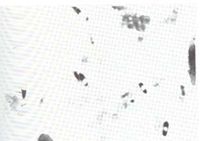
Clostridium
Clostridium perfringes, C.difficile - bacillus and enterotoxin
• normal flora in dogs
• dog kennels, hospital kennels
• acute mucoid or hemorrhagic diarrhea
• chronic intermittant large bowel diarrhea
• primary disease or secondary invader
Clostridium perfringes
• Diagnosis:
o measure enterotoxin in feces Elisa or latex agglutination test
o identify the endospores on fecal smear (safety pin shaped spores)
o *Identification of enterotoxin or endospores does not prove a primary disease process
• Treatment:
o -mild cases of watery diarrhea respond to supportive care (fluids, bland diet)
o -severe cases or chronic cases- ampicillin, metronidazole (Flagyl)
o -high fiber diets - soluble fiber, psyllium for prevention (increases colonic fatty acids)
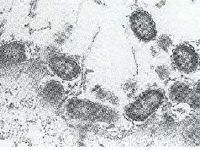
E. coli
• gram negative rod
• normal flora; pathogenic strains
• not a lot known in dogs and cats
• produce toxin, enteroadherant
• acute or chronic diarrhea
• enteroadherant causes profound malabsorption
• isolation with special assays required but doesn't prove infection
Pythium
• Gastric, small and large intestinal pyogranulomatis lesions
• Usually history of hunting dog exposed to stagnant lakes (louisiana, oklahoma, arkansas, mississippi)
• Clinical signs are chronic with vomiting, diarrhea, severe weight loss after months of infection
• Diagnosis is by serology (IFA) or biopsy of the intestinal lesions
• Treatment is Itraconazole and Terbinafin, surgical resection
• Prognosis is poor with only 20% response to treatment. Large intestinal lesions can often be resected completely
Histoplasmosis
• Fungal disease found in the gulfcoast and northeastern states
• Intestinal lesions usually found in dogs although occasionally occurs in cats
• Clinical signs are vomiting, chronic diarrhea, weight loss
• Diagnosis may be made with a rectal swab and cytological exam if large intestine affected
• Tissue biopsy needed for small intestinal lesions
• Treatment with Itraconazole can be curative but usually the patient improves but needs long-term treatment and remains a chronic infection
• Prognosis is guarded